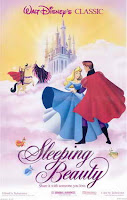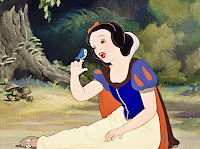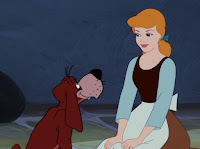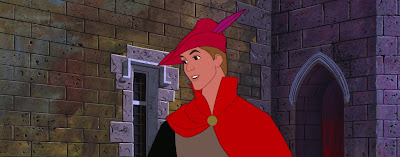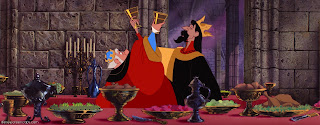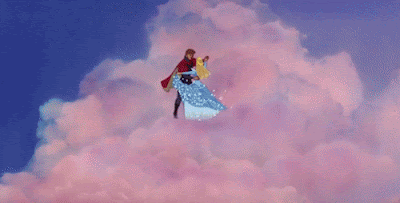Hi folks! Welcome to my My Own Personal Nerdy Disney and Animation Scrutinizing Analysis blog. A blog where I'm analyzing several Disney films, Disney or Animation in general! These entries are just meant to be my analyses. Not reviews or statements. Just fun analyses! Though I'll make some personal remarks now and then, the content of these entries are meant to be depicted objectively. They're made for entertainment purpose only and the pictures/clips are copyright Disney or other companies.
Make sure to leave a comment if you like this site! And if there's something you think could be improved, please let me know. But in a constructive way, please. And just a note; I'm not a Native English writer, so my incorrect grammar may be notable.
And finally; If you haven't seen the films, beware of spoilers! And the funny lines aren't meant to be nothing than funny. So I hope you won't find them offensive. If so, I apologize
 |
| It should've been Sleeping Beauty and Co, but this movie just promotes me :) |
 Sleeping Beauty, Walt Disney's third personal interpretation of a classic fairy tale, is the most polished, yet sophisticated and distinctive out of the trio. It's film that includes his prior components, yet distinguish them in several ways. At the time it was one of Walt's most expensive animated features ever made (costing $ 6 million dollars to make) and a film that was set up for perfection (it's well known that Walt was a perfectionist, but there was a certain bar for Beauty that he wanted to achieve). Therefore he didn't care for how long the production was going to take, since it was in production during the whole fifties.
Sleeping Beauty, Walt Disney's third personal interpretation of a classic fairy tale, is the most polished, yet sophisticated and distinctive out of the trio. It's film that includes his prior components, yet distinguish them in several ways. At the time it was one of Walt's most expensive animated features ever made (costing $ 6 million dollars to make) and a film that was set up for perfection (it's well known that Walt was a perfectionist, but there was a certain bar for Beauty that he wanted to achieve). Therefore he didn't care for how long the production was going to take, since it was in production during the whole fifties. 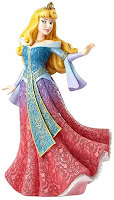 However, though, fate wanted it otherwise for the film. While it certainly wasn't a flop on it's initial release, it still didn't return it's overall cost. Made in an era where Walt himself was loosing interest in animation, Sleeping Beauty gradually became a classic, just as the other films as his first Golden Age. Yet it's also perceived of being distinctive and unique on it's own right (which story guy Tony Baxter has cited in the Picture Perfect; The Making of Sleeping Beauty Documentary). Finally turning 60 this year, Beauty has managed to live on for several generations, but also managed to get the acclaim of being a flawed masterpiece.
However, though, fate wanted it otherwise for the film. While it certainly wasn't a flop on it's initial release, it still didn't return it's overall cost. Made in an era where Walt himself was loosing interest in animation, Sleeping Beauty gradually became a classic, just as the other films as his first Golden Age. Yet it's also perceived of being distinctive and unique on it's own right (which story guy Tony Baxter has cited in the Picture Perfect; The Making of Sleeping Beauty Documentary). Finally turning 60 this year, Beauty has managed to live on for several generations, but also managed to get the acclaim of being a flawed masterpiece.
My Own Personal History With Sleeping Beauty and Walt`s Previous Princess Movies
Being the avid the Disney fan that I've always been, I happened to give certain films a second shot and I learned to love it after when I grew older. I remember receiving it at the age of 12 and even in my early teens I liking it. Yet it was in my adult years that it eventually became one of my favorites. I fell in love with it's strengths, which really made me see past it's aforementioned faults.
Sleeping Beauty`s Staple of It`s Darkness & Sophistication
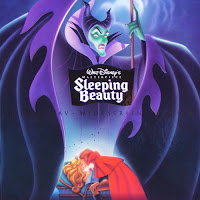 |
| I'm so jealous at Sleeping Beauty that I had to outshine her :) |
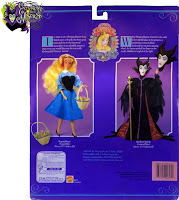 But it's aforementioned faults are mostly the reason why some critics and people haven't warmed up to it. And that's really became a staple of the film. Yet it's mostly the darkest scenes that have struck a chord with people. Although darkness was something that labeled Walt's film and certainly his first one, Snow White and the Seven Dwarfs, it's certainly evident that Sleeping Beauty is indeed the darkest of Walt's fairy tales (and frankly, despite that Cinderella had it's harrowing moments, I never found it dark, personally).
But it's aforementioned faults are mostly the reason why some critics and people haven't warmed up to it. And that's really became a staple of the film. Yet it's mostly the darkest scenes that have struck a chord with people. Although darkness was something that labeled Walt's film and certainly his first one, Snow White and the Seven Dwarfs, it's certainly evident that Sleeping Beauty is indeed the darkest of Walt's fairy tales (and frankly, despite that Cinderella had it's harrowing moments, I never found it dark, personally).
It's not as Sleeping Beauty is absent of glee and delight, since it's has it's fair share of it. But there's certainly a darkness and a sophistication to Sleeping Beauty that makes it easy to why it's suited to an adult audience (Beauty also happened to be Alyssa Milano's favorite of the Disney films, which she confirmed when she hosted The Making of The Little Mermaid).
Princess Aurora
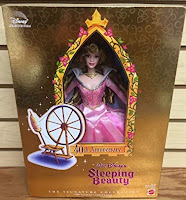
 Of course there's several things that differentiates Sleeping Beauty from it's previous Princess movies. But the most remarkable difference is how little screentime our title character has! No matter what criticism Snow White and Cinderella gets, at least they've been more fleshed out and had more screentime. Although Aurora/Briar Rose's gets a long, elaborate sequence in the forest (known as the famous and expensive sequence 8, which costed $ 10,000 dollars. Which made Once Upon a Dream became the very first song written for the movie), her characterization is unfortunately hampered by her reduced screentime.
Of course there's several things that differentiates Sleeping Beauty from it's previous Princess movies. But the most remarkable difference is how little screentime our title character has! No matter what criticism Snow White and Cinderella gets, at least they've been more fleshed out and had more screentime. Although Aurora/Briar Rose's gets a long, elaborate sequence in the forest (known as the famous and expensive sequence 8, which costed $ 10,000 dollars. Which made Once Upon a Dream became the very first song written for the movie), her characterization is unfortunately hampered by her reduced screentime. 
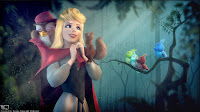 |
| Since I'm a blonde, I'm dumb enough to use an animal as a hoodie :) |
 |
| Hurry up to look at it before Flora comes :) |
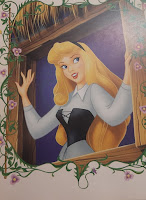
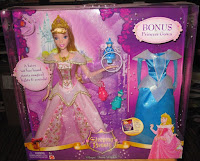 |
| Yup, you've got your both ways; Both pink and blue :) |
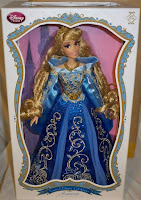
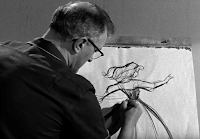 Aurora was animated by Marc Davis, who enjoyed his work on her (and didn't do much rotoscoping). Her look was also based on Audrey Hepburn, who's slender body actually suited the design style. Yet she was given a modern sensibility. Aurora's live action modeling was by Helene Stanley, who also served as the model for Cinderella. And due to he stylished look, Aurora was really hard to animate. So the staff could only do eight drawings at day (studio artist Burny Mattinson was rewarded with a cake for his hard work). Even Mary Costa was also used as a model for Aurora. Alice Davis, Marc's wife, who's previously were a fashion designer, had designed Aurora's outfits. Having her first job at the Disney studios.
Aurora was animated by Marc Davis, who enjoyed his work on her (and didn't do much rotoscoping). Her look was also based on Audrey Hepburn, who's slender body actually suited the design style. Yet she was given a modern sensibility. Aurora's live action modeling was by Helene Stanley, who also served as the model for Cinderella. And due to he stylished look, Aurora was really hard to animate. So the staff could only do eight drawings at day (studio artist Burny Mattinson was rewarded with a cake for his hard work). Even Mary Costa was also used as a model for Aurora. Alice Davis, Marc's wife, who's previously were a fashion designer, had designed Aurora's outfits. Having her first job at the Disney studios.
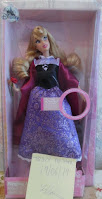
 The famous Sequence 8 was directed by Eric Larsson and was the first, yet longest sequence that was worked on (the expensive cost was the reason for why Larsson was taken off the project. Which he apparently didn't resent). But Walt had a tendency to start working with the sequences that were in the middle of the pictures. Originally the scene didn't feature animals, which Walt decided to put on. For giving more life to the scene.
The famous Sequence 8 was directed by Eric Larsson and was the first, yet longest sequence that was worked on (the expensive cost was the reason for why Larsson was taken off the project. Which he apparently didn't resent). But Walt had a tendency to start working with the sequences that were in the middle of the pictures. Originally the scene didn't feature animals, which Walt decided to put on. For giving more life to the scene. |
| At least it's not Once Upon a Time :) |
Yet Walt's Princesses doesn't only get flack for their damsel-in-distress-nature, but for their blandness. While this of course is subjective statement, you could say that Snow White is the one who's actually having her personality being truly fleshed out (and being truly the stereotypical Disney Princess in every sense).
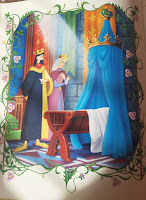 As for Cinderella, she may be more subdued. Yet she does possess spunk and snark at times and certainly has a emotional depth to her. And to be fair, despite that most the flack she gets for relying too much on hope and faith, her devotion, hard work and good deeds makes her earn her happy ending,
As for Cinderella, she may be more subdued. Yet she does possess spunk and snark at times and certainly has a emotional depth to her. And to be fair, despite that most the flack she gets for relying too much on hope and faith, her devotion, hard work and good deeds makes her earn her happy ending, It's not to say that Aurora completely lacks good qualities (she's certainly smart and aware enough to realize what the Good Fairies are up to). But recently she`s been praised by fans for actually chosing her duty as a Princess when she returns back to the castle, despite not wanting to. In true Disney Princess fashion, she's kind to her animal friends and has an astonishing singing voice. Yet what confirms her criticism is that she's still becomes an actual damsel in distress, for falling to sleep (just as Snow White).
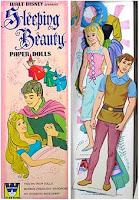
 Originally she was going to be a predecessor to Princess Jasmine, by escaping her opression (in the 1951 treatment of the movie). However, what's unfortunate is in that treatment she's depicted as an unhappy and self-pitying poor rich girl. However, what truly could be said about Aurora, is that she definitively has a different look to her. An angular, dignified look to match the Medieval approach of this movie. Which differentiates her visually from Snow White and Cinderella.
Originally she was going to be a predecessor to Princess Jasmine, by escaping her opression (in the 1951 treatment of the movie). However, what's unfortunate is in that treatment she's depicted as an unhappy and self-pitying poor rich girl. However, what truly could be said about Aurora, is that she definitively has a different look to her. An angular, dignified look to match the Medieval approach of this movie. Which differentiates her visually from Snow White and Cinderella. 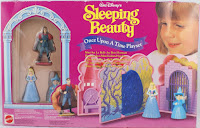
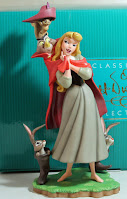 While Sleeping Beauty is known for it's litteral happening to our Princess, it's notable that in this version they have her sleep in a while. Rather than having her sleep a houndred years (which funny enough, something that Malificent mocks Philip for). Which is understandable to see why. And if you think about it, what's funny is that Aurora sleeps through the huge havoc surrounding her fate. Amd being (for all we know) oblivious to that she was cursed. It would be tempting to ponder about Aurora's reduced screentime. But it could be easy to assume that it's to how she's more of a device rather than her own character.
While Sleeping Beauty is known for it's litteral happening to our Princess, it's notable that in this version they have her sleep in a while. Rather than having her sleep a houndred years (which funny enough, something that Malificent mocks Philip for). Which is understandable to see why. And if you think about it, what's funny is that Aurora sleeps through the huge havoc surrounding her fate. Amd being (for all we know) oblivious to that she was cursed. It would be tempting to ponder about Aurora's reduced screentime. But it could be easy to assume that it's to how she's more of a device rather than her own character.Unlike the orphaned Snow White and Cinderella, Aurora has her both parents alive and present. Her father, King Stefan, even gets characterized and gets some screentime. And remarkably enough, the Queen resembles Aurora awfully a lot. Over 50 years later, Tangled would take a cue from Beauty and not only replicate both parents to Rapunzel. But also having a Princess who's taken away from her parents and growing up not knowing of her Royal Title (and coincidentially, both Princesses being blonde).
Prince Philip
Prince Philip, however, gets more screentime than his Prince counterparts. Which is certainly a step forward, considering how little screentime the previous Princes. Which of course was no coincidence at all.
 |
| I know you haven't seen a human bathing before, but try to act less baffled :) |
Despite this, however, his extended screentime doesn't enhance his characterization at all. As he comes across as just as non-characterizated as his female counterpart (yes, I know that I'm practially bashing our leads, but there's no secret that they're both quite personality-deprived. Which several people has agreed on).
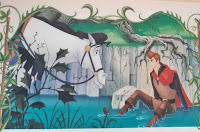
 An original outline had Philip going into a huge, elaborate quest hunt. To actually give him a reason to meet Aurora. But it got scrapped. Despite that his romance with Aurora/Briar Rose may be sparse, brief and contrived, at least it's given a bit of suspense and cleverness. Both of them meet without the knowlegde of meeting their betrothed one, And doesn't even get to know each other names! And both of them believes they're actually betrothed to a different person from whom they met in the forest (which makes the epiphany at the ending fun). A cue from Snow White was to have Aurora and Philip Meeting before the live-saving smooch. In order to enhance the believability of the romance.
An original outline had Philip going into a huge, elaborate quest hunt. To actually give him a reason to meet Aurora. But it got scrapped. Despite that his romance with Aurora/Briar Rose may be sparse, brief and contrived, at least it's given a bit of suspense and cleverness. Both of them meet without the knowlegde of meeting their betrothed one, And doesn't even get to know each other names! And both of them believes they're actually betrothed to a different person from whom they met in the forest (which makes the epiphany at the ending fun). A cue from Snow White was to have Aurora and Philip Meeting before the live-saving smooch. In order to enhance the believability of the romance.  |
| Don't worry, I know it's a girl's thing, so therefore I'm throwing it :) |
 What's funny is that Philip must (obviously) have been a couple of years older than Aurora, who he meets an newborn baby (something that former Disney employee Richard Rich's Disney-knock off The Swan Princess would replicate with a similar scene).
What's funny is that Philip must (obviously) have been a couple of years older than Aurora, who he meets an newborn baby (something that former Disney employee Richard Rich's Disney-knock off The Swan Princess would replicate with a similar scene).
And while Snow White is semi-saved by the true love first kiss, Philip is the one who actually saves his Princess from the villain (yet the Princess wasn't awakened by a kiss in every versions of the original fairy tale, since she was awakened by his bowing to her, whereas the Prince was monogamous in other versions).
 |
| Of course I'm sullen since you've captured me :) |
 Just like the Prince in Cinderella, Prince Philip has his father present and alive in King Hubert. Who shared both a similar size and temper (played by Disney veteran Bill Thompson, who was initially described to be like him). And both fathers shares their fair amount of screentime. Yet despite the new stylistic approach, Walt wanted more than ever to have human subleties on the characters. Philip was animated by Milt Kahl, who was skilled at doing realistic men. But absolutely dreaded the task for it's mere boredom. Yet he animated his faithful steed, Samson, who was more expressive (influenced by the drawings of British cartoonist Ronald Searle). Both Kahl and Davis wanted to show off their skills on this movie (and Kahl usually bragged about it), which Kahl proved with the drinking Court Jester in the Skumbs-sequence. Also partially animated by John Lounsbery, who often got slapstick scenes (despite his sophistiacted way of drawing). And who happened to be Don Bluth's mentor at the time.
Just like the Prince in Cinderella, Prince Philip has his father present and alive in King Hubert. Who shared both a similar size and temper (played by Disney veteran Bill Thompson, who was initially described to be like him). And both fathers shares their fair amount of screentime. Yet despite the new stylistic approach, Walt wanted more than ever to have human subleties on the characters. Philip was animated by Milt Kahl, who was skilled at doing realistic men. But absolutely dreaded the task for it's mere boredom. Yet he animated his faithful steed, Samson, who was more expressive (influenced by the drawings of British cartoonist Ronald Searle). Both Kahl and Davis wanted to show off their skills on this movie (and Kahl usually bragged about it), which Kahl proved with the drinking Court Jester in the Skumbs-sequence. Also partially animated by John Lounsbery, who often got slapstick scenes (despite his sophistiacted way of drawing). And who happened to be Don Bluth's mentor at the time.
The Three Goodfairies
 A remarkable thing is that the Three Goodfairies are the most fleshed out characters in the film and observes most screentime. Symbolically, it's tempting to label them as the true protagonists of Sleeping Beauty. Not to mention that they're awfully proactive and are devices for the plot.
A remarkable thing is that the Three Goodfairies are the most fleshed out characters in the film and observes most screentime. Symbolically, it's tempting to label them as the true protagonists of Sleeping Beauty. Not to mention that they're awfully proactive and are devices for the plot.
It's tempting to claim that they're continuations of The Fairy Godmother from Cinderella (which her voice actress, Disney-veteran Verna Felton, lend her voice to Flora. For the matriarchal authority), yet being more fleshed out. Originally the fairies were going to be identical in terms of their personalities. Like Huey, Dewey and Louie. Yet they were given distinctive personalities and being three different archetypes (yet in the written versions of the original fairy tale, the amount of faires has been varied. Yet Walt wanted to have them be a trio, due to having a broader range of character interaction). Yet for all the aforementioned rants about Aurora's passive nature, Sleeping Beauty is in fact far from anti-feminist, as the Fairies helps Philip defeat Maleficent.
 |
| We`ve stolen these goods :) |
 It's notable that the main feud between these faires are between the headstrong personalities of Flora and Merryweather (who's voiced by another Disney veteran, Barbara Luddy), while Fauna (played by actress and radio star Barbara Jo Allen, while for some reason Fauna's voice actress is credited Allen's screen name, Vera Vague) is the third wheel, yet being the one who gets the smartest ideas. Fauna`s characterization was inspired from a woman that Frank Thomas met in Colorado. Frank and Ollie Johnston took reference from random women they studied everywhere (which Walt encouraged them to do).
It's notable that the main feud between these faires are between the headstrong personalities of Flora and Merryweather (who's voiced by another Disney veteran, Barbara Luddy), while Fauna (played by actress and radio star Barbara Jo Allen, while for some reason Fauna's voice actress is credited Allen's screen name, Vera Vague) is the third wheel, yet being the one who gets the smartest ideas. Fauna`s characterization was inspired from a woman that Frank Thomas met in Colorado. Frank and Ollie Johnston took reference from random women they studied everywhere (which Walt encouraged them to do). 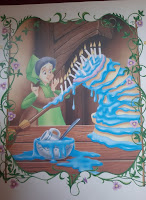 |
| It's a circus cake :) |
.jpg) The fairies were named due to their control over nature. While that idea was rejected, their final names remained (while two of them were originally called Tranquility and Fernadell). Originally they were also going to execute the traits of their names (Flora would be a flower person, Fauna for the animals and Merryweather would Control the weather). Yet one story problem was to figure their limiation of their own magic.
The fairies were named due to their control over nature. While that idea was rejected, their final names remained (while two of them were originally called Tranquility and Fernadell). Originally they were also going to execute the traits of their names (Flora would be a flower person, Fauna for the animals and Merryweather would Control the weather). Yet one story problem was to figure their limiation of their own magic.
What's all more remarkable is that both Snow White and Cinderella created a staple for the Princess movies: The so-called cleaning sequence. Yet in Sleeping Beauty the cleaning is for once executed by the fairies rather than the Princess herself (originally their chores were going to be different, Merryweather wanted to make the cake, Fauna the dress and Flora the cleaning).
 |
| I know that's not supposed to be heavy, but try to act like it isn't :) |
 Having them to serve as surrogate mothers for our Sleeping Beauty certainly was an new element that Disney added. Another conscious reason for this was to make Aurora unaware of her Princess part and to differentiate her from her Princess predecessors. As for their designs, they were the roundest of the characters. And therefore being the ones who had the familiar Disney-design. Which was something that the animators managed to get their way with. While stylist Eivind Earle wanted to get his way of stylishing the characters. Originally the fairies were going to have gags that were broader, which Walt declined. While originally they were designed in a more strict geometry to reflect the primary shapes of square, triangle and circle, which made them harder to animate.
Having them to serve as surrogate mothers for our Sleeping Beauty certainly was an new element that Disney added. Another conscious reason for this was to make Aurora unaware of her Princess part and to differentiate her from her Princess predecessors. As for their designs, they were the roundest of the characters. And therefore being the ones who had the familiar Disney-design. Which was something that the animators managed to get their way with. While stylist Eivind Earle wanted to get his way of stylishing the characters. Originally the fairies were going to have gags that were broader, which Walt declined. While originally they were designed in a more strict geometry to reflect the primary shapes of square, triangle and circle, which made them harder to animate. The Kings
One common criticism against Walt's fairy tale films is how the side characters dominated at the expense of the main characters. This is certainly evident in Sleeping Beauty, which makes it somewhat a departure from Snow White. Who gets her fair amount of screentime equally balanced with the screentime of her seven dwarfs.
 |
| My age has made me believe that fishes are sharp weapons :) |
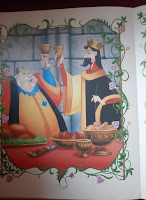 |
| Look at this, Rihanna :) |
Maleficent
 |
| One of us is the original, but since we both disagree on it, it's up to you to decide :) |
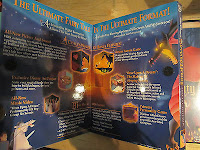 Maleficent is one of the main attractions of this film and a reason why people are drawn to it. Voiced by another Disney-veteran, Eleanor Audley, who also voiced Lady Tremaine in Cinderella and also served as her live action model (Walt loved her voice due to her sheer presence and power. Yet she was seriously sick during her recording of Beauty). Audley has said that she tried to combine both sweetness and nastiness at the same time.
Maleficent is one of the main attractions of this film and a reason why people are drawn to it. Voiced by another Disney-veteran, Eleanor Audley, who also voiced Lady Tremaine in Cinderella and also served as her live action model (Walt loved her voice due to her sheer presence and power. Yet she was seriously sick during her recording of Beauty). Audley has said that she tried to combine both sweetness and nastiness at the same time.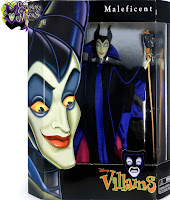
 Although it's of course my personal preference, I find Malificent to be superior to both The Wicked Queen and Lady Tremaine. It's not strange that Malificent got her own movie that was a huge flop, featuring the very unknown Angelina Jolie (yes, note the sarcasm, folks). A movie that was an alternative to her final execution and showed her gentle side. And who's got a sequel.
Although it's of course my personal preference, I find Malificent to be superior to both The Wicked Queen and Lady Tremaine. It's not strange that Malificent got her own movie that was a huge flop, featuring the very unknown Angelina Jolie (yes, note the sarcasm, folks). A movie that was an alternative to her final execution and showed her gentle side. And who's got a sequel. 
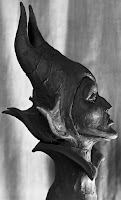 Alongside with Aurora, Maleficent was animated by Marc Davis (who had fun with his role and originally wanted her costume to have flames). Malificent is certainly a scary villiain, but definitively has something which truly makes a great Disney villain; Charisma and presence (while in her earlier versions, she looked like a pixie). She's certainly listed on the rankings of The Great Disney villains. And let's not deny it; Alongside with The Wicked Queen, she's happens to be quite sexy.
Alongside with Aurora, Maleficent was animated by Marc Davis (who had fun with his role and originally wanted her costume to have flames). Malificent is certainly a scary villiain, but definitively has something which truly makes a great Disney villain; Charisma and presence (while in her earlier versions, she looked like a pixie). She's certainly listed on the rankings of The Great Disney villains. And let's not deny it; Alongside with The Wicked Queen, she's happens to be quite sexy.
Just as with The Wicked Queen, Malificent harbors magical powers and makes a transformation. While Maleficents motivations for revenge can easily be perceived as rather vague, she's perhaps the first Villainess who truly proclaims her evilness from Hell (regardless that religion is a non-issue in this film).
 |
| Dr. Facilier would've love this :) |
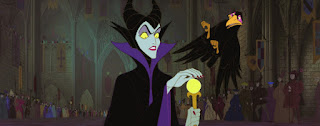 |
| I know that I'm not supposed to touch it,
but I'm evil, so I'm rebellious :)
|
Maleficent may share a couple of moments with Aurora, but they never interact together. At least
she gets to interact with Philip, which is an departure from The Wicked Queen and Lady Tremaine.
Her memorable fight with him has certainly scared people for life (despite how ironically The Good Faires are mostly responsible for her defeat). Supervised by Disney veteran Woolie Reitherman, who loved action (despite that the fight got criticized for it's inplausabilities). The brief, yet iconic battle has been labeled as one of the greatest Disney climaxes and certainly has inspired other Disney moments. As Aladdin's fight with Jafar (who also was inspired by Maleficent). Perhaps the most overt homage is the one from Enchanted, where Queen Narissa literally transform herself to a giant dragon. An LA Film Festival listed this battle as one of the greatest achievements on 70 mm film.
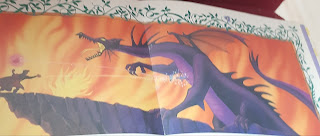 |
| Bullseye! :) Right in my dragonheart :) Pun intended :) |
Malificent's goons proved to be a challenge to cast as well. Since they were initially funny, but had to be more menacing as well (their head honcho played by Disney regular Candy Candido). Personally they've always been my least favorite of the movie, due to their extremely jarringly, cartoony nature (and being the most imbisile morons ever, looking for a baby for 16 years). But at least they have quite minimited screentime. One challenge with Malificent was that she more directly gave speeches in her dialogue. So therefore she needed an confidant, which had the raven Diablo born.
The Visuals

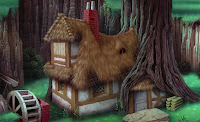 Sleeping Beauty is pretty much an amalgam of both Snow White and Cinderella, combining elements from both of them. Walt knew he was going to visit several of the same story elements he did priorly with his Princess predecessors. And therefore it was a challenge to him to make it different from it's peers, which worried him (which even was a mantra for the creators). Therefore he wanted to distinguish the film by it's sheer visual look.
Sleeping Beauty is pretty much an amalgam of both Snow White and Cinderella, combining elements from both of them. Walt knew he was going to visit several of the same story elements he did priorly with his Princess predecessors. And therefore it was a challenge to him to make it different from it's peers, which worried him (which even was a mantra for the creators). Therefore he wanted to distinguish the film by it's sheer visual look.
It was Layout Artist John Hench who've saw the Unicorn Tapestries on Cloisters of Metropolitan Museum of Art's Medieval Galleries in Manhattan, which became the style of the movie. The style was originally suggested by studio artist Kay Nielsen. Yet the task was handed to artist Eyvind Earle. A quiet hard-worker who was forced to paint by his father and make them his living in the Great Depression.
 His style was rooted in international Gothic, late Medieval, proto Renaissance-period. Where painters used highly-detailed composition. One of his inspirations were Book of Hours of Jean Duc de Berry (which was a combination of a prayer book and a calendar). Earle also studied Persian miniature paintings, that everything was painted in focus and clear and clean at the same time. Yet he wanted to make both the backgrounds and the characters in focus. Earle started at the studio in 1951 (the year his abusive father died) as an assistant background painter. But quickly rose through the ranks for his previous work.
His style was rooted in international Gothic, late Medieval, proto Renaissance-period. Where painters used highly-detailed composition. One of his inspirations were Book of Hours of Jean Duc de Berry (which was a combination of a prayer book and a calendar). Earle also studied Persian miniature paintings, that everything was painted in focus and clear and clean at the same time. Yet he wanted to make both the backgrounds and the characters in focus. Earle started at the studio in 1951 (the year his abusive father died) as an assistant background painter. But quickly rose through the ranks for his previous work.  Earle was inspired by Mary Blair's work and worked himself on some features from the 1950`s prior to Beauty. Also with some shorts with Ward Kimball. His work was so impressive that the rest of the staff were sneaking to look at it. Earle wanted also to have his impact on the look of the characters and even coloring them. Despite that not all of his coloring made it. Earle wanted himself to do the work all alone. While the animators were initially intrigued by a new style, some of the crew had trouble adapting it. Therefore the characters needed to be more angular to fit the style, yet some of the staff perceived them as being too angular, which made the characters a little stiffer. Yet Walt felt that the animation was superior in Beauty than in Snow White.
Earle was inspired by Mary Blair's work and worked himself on some features from the 1950`s prior to Beauty. Also with some shorts with Ward Kimball. His work was so impressive that the rest of the staff were sneaking to look at it. Earle wanted also to have his impact on the look of the characters and even coloring them. Despite that not all of his coloring made it. Earle wanted himself to do the work all alone. While the animators were initially intrigued by a new style, some of the crew had trouble adapting it. Therefore the characters needed to be more angular to fit the style, yet some of the staff perceived them as being too angular, which made the characters a little stiffer. Yet Walt felt that the animation was superior in Beauty than in Snow White. |
| I'm not Little Red Riding Hood, but let's hope the Wolf is not there :) |
What's really remarkable is how Gothic, yet current at the time the design was, with a 50's style. Also an inspiration were the character designs from UPA. The creators also wanted to have the verticals on the character designs themselves. The visuals were almost stained glass window looking.
 |
| We're pale imitations of Aladdin's lamp :) |
 |
| She slept in another picture :) |
 |
| This is a book for New Age-believers :) |
Yet Beauty was also the very last picture to use hand-inked cels, which preceeded the Xerox process. However, thanks to it's big loss, the upcoming Disney films had a rougher look to them. A look which Walt supposedly hated. So expensive was Beauty that Walt were considering to shot down the studio (which really was what he discussed with Eric Larson on the picture where they were looking at the walls of the art in Bob Thomas The Art of Animation).
Music
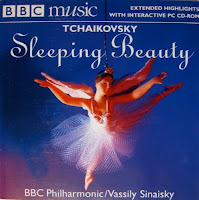 |
| She's dancing ballet in sleep :) |
 Another departure with Sleeping Beauty is it's music. Taken from Peter Tchaikovsky's original Ballet from 1889. Still the choice was originally to not adapt it, due to difficulties and being a hindrance in storytelling (and also fearing for receiving the same flack that Fantasia received for it's blending of classical Music to animation), it was decided to actually do it nonetheless. As early as in 1953. At least this approach to score makes Sleeping Beauty distinctive and unique. Despite how Walt's previous scores to his films were classically rooted as well, at least what differentiates Beauty that it had an already written score that was readapted to a new format.
Another departure with Sleeping Beauty is it's music. Taken from Peter Tchaikovsky's original Ballet from 1889. Still the choice was originally to not adapt it, due to difficulties and being a hindrance in storytelling (and also fearing for receiving the same flack that Fantasia received for it's blending of classical Music to animation), it was decided to actually do it nonetheless. As early as in 1953. At least this approach to score makes Sleeping Beauty distinctive and unique. Despite how Walt's previous scores to his films were classically rooted as well, at least what differentiates Beauty that it had an already written score that was readapted to a new format. 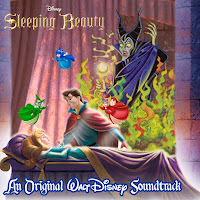 |
| You arrived before me! Wtf? :) |
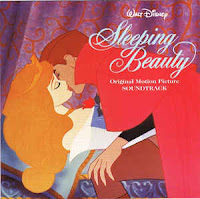 |
| We've been inspired by Snow White and her Prince :) |
Originally the songs were going to be the same way as it's predecessors. Veteran songwriters Sammy Fain and Jack Lawrence created several melodies and their songs had the same placements as the final songs had. Walt initially wanted an original score. However, he realized that the score needed to match the busy visuals (and he told Helene Stanley, in a tongue-in-cheek-way, that Tchaikovsky had replaced the former songwriters). Yet Once Upon a Dream was the only song that Fain and Lawrence adapted from Tchaikovsky (and became the only hit, yet it was written by storymen Ted Sears and Winston Hibler). An idea was to have studioman Walter Schumann making his arrangements more Tchaikovsky-like.
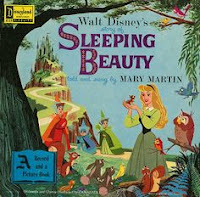 |
| Even the animals are mesmerized by my beauty :) |
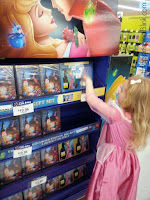 Of course Tchaikovsky-approach made some purists scream foul. Yet Walt's argument was that it was the chance to legitimately steal from Tchaikovsky, since his work was often used/stolen, anyways. George Burns adapted the score, which was a task he greatly supported and studied the original ballet note by notes for three years. While also writing Davy Crockett at the same time. While he was tempted to write an original score as well, he was mesmerized by Tchaikovsky's work. Yet several of Burns original songs were dropped. Only Skumps was an original cue not taking from the ballet (which was originally intended to be earlier in the picture).
Of course Tchaikovsky-approach made some purists scream foul. Yet Walt's argument was that it was the chance to legitimately steal from Tchaikovsky, since his work was often used/stolen, anyways. George Burns adapted the score, which was a task he greatly supported and studied the original ballet note by notes for three years. While also writing Davy Crockett at the same time. While he was tempted to write an original score as well, he was mesmerized by Tchaikovsky's work. Yet several of Burns original songs were dropped. Only Skumps was an original cue not taking from the ballet (which was originally intended to be earlier in the picture).
Some sequences had to be scored with an full orchestra before the animation began, due to the matching. The voices were recorded in Hollywood, whereas the score, while initially made in Los Angeles, was made in Berlin. And also being the first stereo recording in a new hall. Recorded in four-track stereo and being released in six-track stereo, which was pretty expensive.
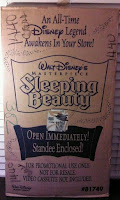 |
| They wrapped in a Box that was big enough for me :) |
 Sometimes Burns even stretched the score, as in the Magical House Cleaning-segment (which originally was going to be an own song called Riddle Diddle by Fain and Lawrence occurring at the same scene). The Christening of Aurora was deliberately made into different segments of song, in order to make the scene less boring. Originally even Malificent was going to have her own song, about all the forces of evil and dark creatures of the night. And the melody for her song was used in the fairies preparation of Aurora's birthday. Originally there were going to be a song named I Happen to Have a Picture. Which current fathers would show wallets and show photos of their babies. Which both fathers of the lovebirds would also do.
Sometimes Burns even stretched the score, as in the Magical House Cleaning-segment (which originally was going to be an own song called Riddle Diddle by Fain and Lawrence occurring at the same scene). The Christening of Aurora was deliberately made into different segments of song, in order to make the scene less boring. Originally even Malificent was going to have her own song, about all the forces of evil and dark creatures of the night. And the melody for her song was used in the fairies preparation of Aurora's birthday. Originally there were going to be a song named I Happen to Have a Picture. Which current fathers would show wallets and show photos of their babies. Which both fathers of the lovebirds would also do.
Since Fantasia has been mentioned, it's redundant to say that Sleeping Beauty has been compared to it. For it's combination of already written classical music and animation as an artform. No matter what could be said about this comparison, it's after all a legit one. Which gives both films a similar fanbase.
Behind the Scenes Information
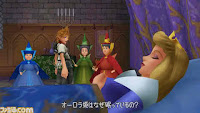 |
| Let's be happy Shrek wasn't here :) |
 |
| They always forget that I'm, Philip, is an intergral part of the story :) |
 |
| I'm so tired when they mess up the titles when I'm awake :) |
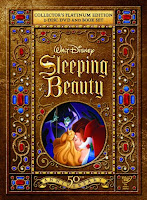 |
| Call it the Jewel book :) |

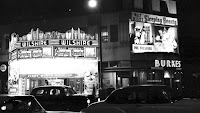 It's redundant to summarize Disney's very well known Disneyfication. But with Sleeping Beauty, Disney threw the second act of the fairy tale (the Prince and Princess giving birth to their childs and the Princess and her kids being sent to a cottage in the Woods, where the Queen is an evil ogress) and concentraded on the first act. There was more action put on it. Of course Disney had to take consideration in both Brother Grimms, Charles Perraults (which is the best known version) and Tchaikovsky's ballet. While the source material is confirmed to take from Perrault's version, it has more in common with Grimms Versions. Sleeping Beauty's castle was built to synergize the production, yet it was originally conceived to be Snow White's castle. And this castle has become pretty much the symbol of DisneyWorld, one of it's most recognizable trademarks.
It's redundant to summarize Disney's very well known Disneyfication. But with Sleeping Beauty, Disney threw the second act of the fairy tale (the Prince and Princess giving birth to their childs and the Princess and her kids being sent to a cottage in the Woods, where the Queen is an evil ogress) and concentraded on the first act. There was more action put on it. Of course Disney had to take consideration in both Brother Grimms, Charles Perraults (which is the best known version) and Tchaikovsky's ballet. While the source material is confirmed to take from Perrault's version, it has more in common with Grimms Versions. Sleeping Beauty's castle was built to synergize the production, yet it was originally conceived to be Snow White's castle. And this castle has become pretty much the symbol of DisneyWorld, one of it's most recognizable trademarks.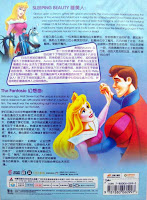
 Also something that differentiates Sleeping Beauty from it's predecessors was it's Technirama. It's 70 mm frame. Which was really challenging for the animators to work with, as well as intimidating. The sheets were hard to flip back and forward with. Closeups of the characters were also something that was difficult in Technirama. However, Earle was pleased with the choice, since it suited him perfectly. Yet the Technirama process was also something that delayed the process. But the movie was never released at it's completely full frame (2.55 mm) on home video until the Platinum Edition. Frank Thomas was especially proud of the subtle movements on the crying scene of the fairies. The effect work on this movie was also innovative. And at least with Beauty, Walt could finally use his "Dance upon a cloud"-sequence. An idea that was discarded from both Snow White and Cinderella.
Also something that differentiates Sleeping Beauty from it's predecessors was it's Technirama. It's 70 mm frame. Which was really challenging for the animators to work with, as well as intimidating. The sheets were hard to flip back and forward with. Closeups of the characters were also something that was difficult in Technirama. However, Earle was pleased with the choice, since it suited him perfectly. Yet the Technirama process was also something that delayed the process. But the movie was never released at it's completely full frame (2.55 mm) on home video until the Platinum Edition. Frank Thomas was especially proud of the subtle movements on the crying scene of the fairies. The effect work on this movie was also innovative. And at least with Beauty, Walt could finally use his "Dance upon a cloud"-sequence. An idea that was discarded from both Snow White and Cinderella.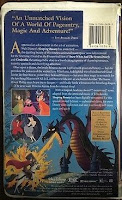
 Of course it's redundant to state that Walt's features has influenced several of the following generation of Disney artists. To mention a couple of them, it was Mike Giamo and Mike Gabriel, both who worked on Pocahontas and influenced that film heavily by the shapes and vertical designs (and Beauty was the very first Disney film both saw as kids. Which both were influenced by the look and not so much the story). Gabriel especially loved the Dragon Fight and cites it being one of the most compelling moments in cinematic history (the dragon's movements were based on the rattlesnakes). Bill Peet had fun With making the designs of the goons. Just like several other Disney movies, Sleeping Beauty made up it's costs during it's re-releases, which were in 1970, 1979 and 1986. Which also happened to be the first time being released on Home Video in 1986.
Of course it's redundant to state that Walt's features has influenced several of the following generation of Disney artists. To mention a couple of them, it was Mike Giamo and Mike Gabriel, both who worked on Pocahontas and influenced that film heavily by the shapes and vertical designs (and Beauty was the very first Disney film both saw as kids. Which both were influenced by the look and not so much the story). Gabriel especially loved the Dragon Fight and cites it being one of the most compelling moments in cinematic history (the dragon's movements were based on the rattlesnakes). Bill Peet had fun With making the designs of the goons. Just like several other Disney movies, Sleeping Beauty made up it's costs during it's re-releases, which were in 1970, 1979 and 1986. Which also happened to be the first time being released on Home Video in 1986. Epilogue
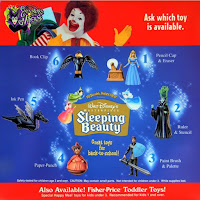
 |
| At least it has a color that neither Flora nor Merryweather has decided :) |
Wake up my updates on https://www.facebook.com/profile.php?id=100035703494050 and https://twitter.com/NerdyLunada.
References:
Sleeping Beauty Platinum Edition
Once Upon a Dream: From Perrault's Sleeping Beauty to Disney's Maleficent (Charles Solomon)Sleeping Beauty Diamond Edition
Disney's Art of Animation: From Mickey Mouse to Hercules (Bob Thomas)
Sleeping Beauty Special Edition.
Mouse Under Glass: Secrets of Disney Animation & Theme Parks (David Koenig)
Sleeping Beauty The Legacy Collection.
The Art of Walt Disney: From Mickey Mouse to the Magic Kingdoms and Beyond (Christopher Finch)
https://books.google.no/books?id=5JHrODsAdNwC&printsec=frontcover&hl=no#v=onepage&q=interest&f=false
http://mayersononanimation.blogspot.com/2008/11/sleeping-beauty-puts-me-to-sleep.html
https://www.youtube.com/watch?v=IuHR5ZOWp-U (The Making of The Little Mermaid - Disney Channel (1989)
https://www.youtube.com/watch?v=IuHR5ZOWp-U (The Making of The Little Mermaid - Disney Channel (1989)


